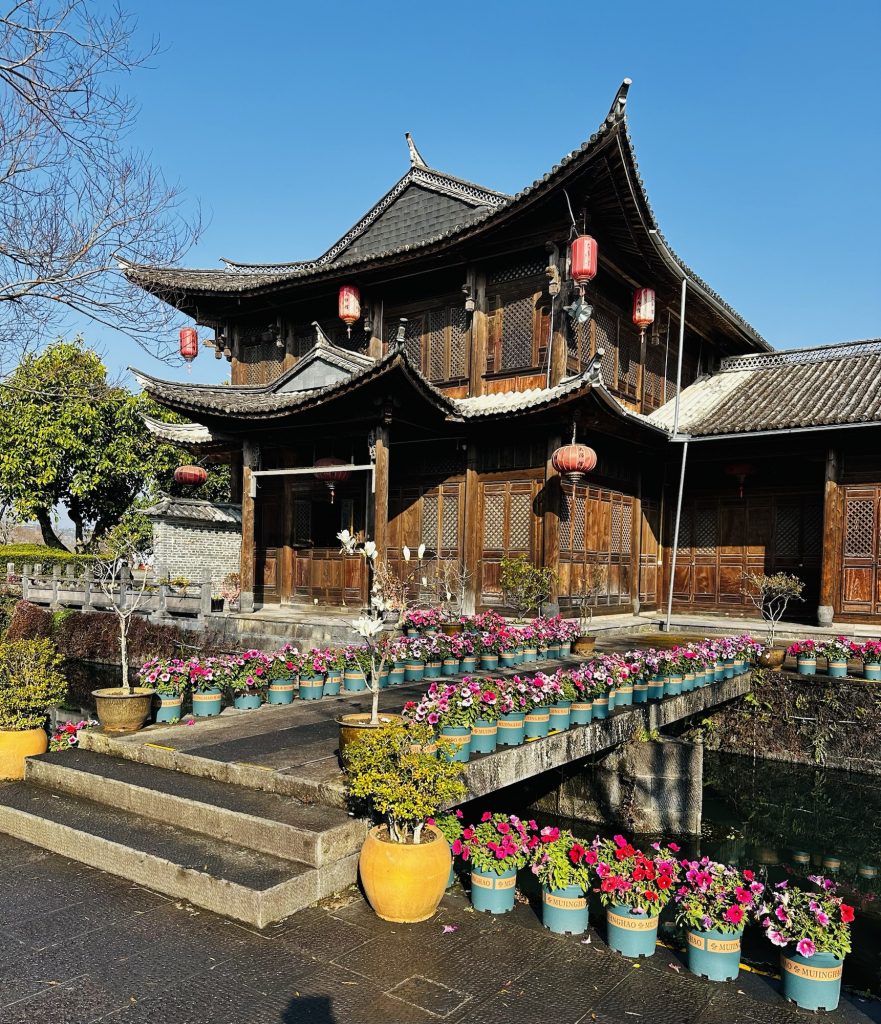
As I write this, it’s a day in China called 立春, Li Chun, the beginning of spring. Let’s first of all take a moment to appreciate a culture that has a celebration day for not just the 4 seasons but for 24 different seasonal days during the agrarian year. This ‘Li Chun’ I’m in an ancient town in Yunnan province called Heshun, near the city of Tengchong. On this particular morning the Yunnan sun is shining, the Yunnan birds are chirruping and the excited hum of tourist chatter is in every corner of the town. Quite rightly Heshun is on the bucket list of every Chinese traveller. Now it’s the Spring Festival and together with the obligatory home town trip, there is nothing the Chinese people love more than to travel.
And there’s the theme for our Blog today. We British and we Chinese share a love of travel. In English we talk about ‘itchy feet’. In Chinese there is an exact equivalent ‘an itchy heart’. Life is full of 阴阳, yinyang harmonies of opposites isn’t it? Both the British and the Chinese are deeply home loving, and yet full of this curiosity to see what lies around the corner. It’s the first day of Spring and the atmosphere here in Heshun could be exactly described by the opening lines of Chaucer’s ‘Canterbury Tales’.
“And smale foweles maken melodye,
And small fowls make melody,
That slepen al the nyght with open ye
Those that sleep all the night with open eyes
So priketh hem Nature in hir corages,
So Nature incites them in their hearts,
Thanne longen folk to goon on pilgrimages,
Then folk long to go on pilgrimages.”
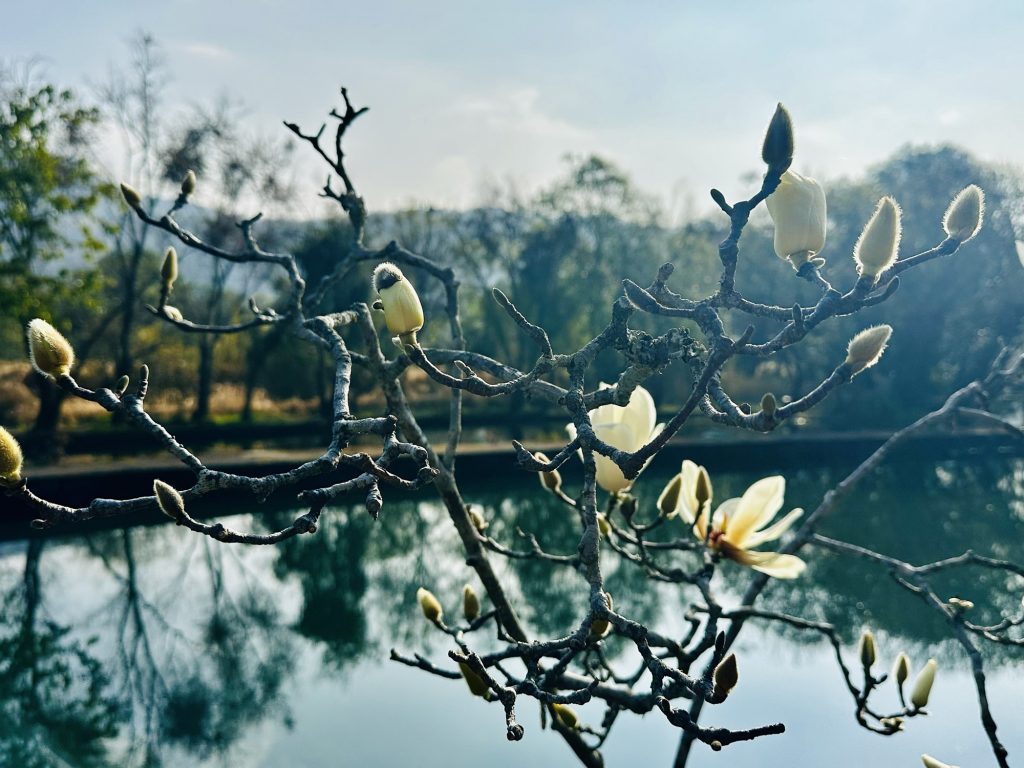
Of which vertú engendred is the flour”
(Chaucer’s Prologue)
We shouldn’t get hung up on the idea of pilgrimage. Chaucer certainly doesn’t. These lines clearly link travel to natural impulses as much as any religious motivation. And don’t you think there is a sense in which travel is a modern cure for a kind of sickness, the sickness of the stress of routine jobs, in uniform cities, following regulated timetables and working long hours. In Britain from the 1930’s we have the folk memory of ‘worker’s holidays’ with charabancs (coaches) of labouring families heading off to the seaside to recharge their batteries.
I believe the curative powers of travel go even deeper than that. Let’s drop in on a poem by another British poet, William Wordsworth. I don’t think they’d thank me for it, but the British romantics were very much proto-tourists, always packing a portmanteau before heading off to Devon or the Lake District for a spot of sightseeing. And after one such jaunt Wordsworth wrote the following lines,
‘But oft, in lonely rooms, and ‘mid the din
Of towns and cities, I have owed to them,
In hours of weariness, sensations sweet,
Felt in the blood, and felt along the heart;
And passing even into my purer mind
With tranquil restoration:—feelings too
Of unremembered pleasure: such, perhaps,
As have no slight or trivial influence
On that best portion of a good man’s life.’
(and ‘good woman’s life’ I will add!)
What I feel Wordsworth is describing here is a ‘secular spiritualism’ which we’ve all adapted into our cultural lives to survive industrial urbanisation. How many times how you found yourself saying while travelling, ‘I’ll treasure this memory when I’m back at work!’ Wordsworth could never have predicted photos or postcards but these are both forms of ‘tranquil restorations’ aren’t they?
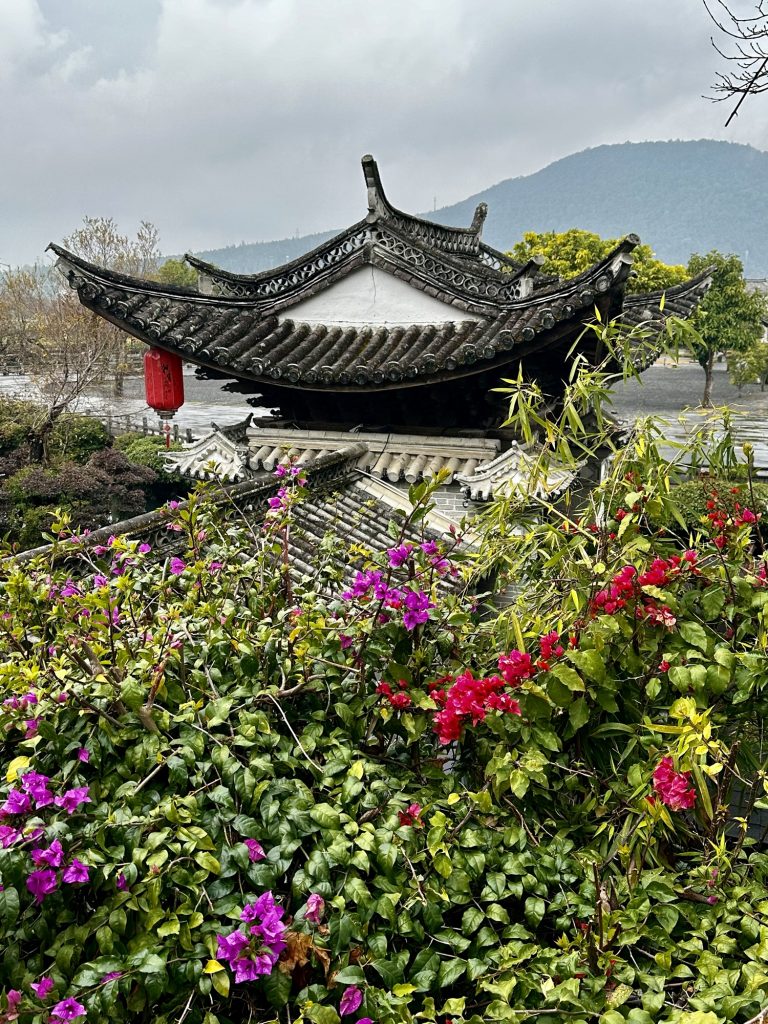
Let’s find an equivalent in England for Li Chun, let’s say Spring Bank holiday and pop over to any picturesque village or any scenic landscape, and we’ll find travellers doing exactly what our Chinese friends are doing this morning, curating their own set of memories for later ‘tranquil restoration’. Look closer and we’ll even see the same characters- the family towing kids who hate the history but love the snacks, the romantic couple looking for the next idyllic backdrop for their love, the solo traveller laden with high definition photographic equipment for gathering more refined recollections.
So let’s join them and immerse ourselves in impressions of Heshun. When I’m back in grey workaday Beijing there is no doubt in my mind that memories of Heshun will return to lighten my spirits. Imagine if you will for a moment the most achingly English of villages. For me this would be somewhere in my birth area of Wessex, somewhere like Lacock, if you’ve been lucky enough to visit there. Heshun is all of that and more in a timeless Chinese version. I’m convinced that if you asked AI to create images of a typical ancient Chinese town, every picture the computer produced would be a pale imitation of Heshun.
First of all Heshun is blessed by its location. It’s on the outskirts of a busy modern city, Tengchong, which means it’s easily accessible, but unlike another famous Yunnan ancient town called Dali, it hasn’t been swallowed up by progress. It’s in a fertile valley, so surrounded by fields full of glowing emerald vegetables most of the year round. It’s backed by low mountains which are often mist-clouded in the early mornings. It’s wonderfully car free so we either have to park and walk into the town itself or jump aboard the little electric powered tourist carts (like elongated golf buggies) that are now ubiquitous at every Chinese tourist attraction. We’re experienced SACU wanderers, close to the people, so let’s walk.
As soon as we pass the obligatory shopping parade at the entrance, we stroll under a gate, round a corner and into wonderland. Just behind a small stream of crystal clear mountain water, Heshun is painted picturesquely, whitewashed houses gently climbing up a low hill. In fact the old name of the town means ‘along the river’. There’s a choice of two bridges to cross the water, both in the characteristic rounded style, called in Chinese ‘arch bridges’. In fact locally the two bridges are called ‘rainbow bridges’ because of their graceful arch shapes.
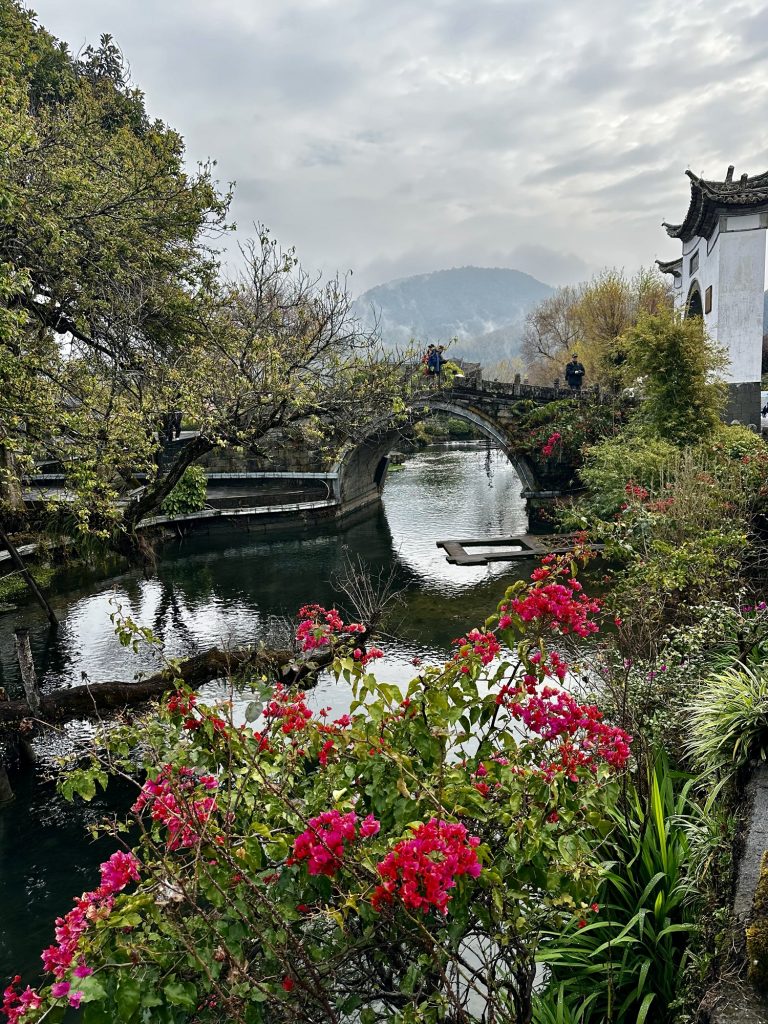
Over the rainbow’s back we go. Now we have a choice. We can stroll along the river’s side. We will go past a range of typical houses. Most date from the Ming or Qing dynasty. Some are half wooden, with the charm of carved features. Most have pure white-washed walls. Look up into the eaves and you’ll see painted panels in the Chinese style. The rooves are covered in rounded grey tiles, that are like the linked scales of myriads of lizards resting on the hillside, taking in the spring sun. And every roof ends in the gentle upturned eaves that makes it seem as if it’s about to take flight. The architecture then is a harmony composed of yellow sandy mud walls, plaster work gleaming with white-wash, a forest of carved wood. And of course all along the waterfront are those reflections. The floating shadows of the walls, accompanied by the decorative motifs of abundant Yunnan flowers.
The second route leads you up into the town itself. Hands up who remembers the famous Hovis ‘boy on a bike’ bread advert with the lad delivering loaves up the cobbled streets of a nostalgic town (actually Shaftesbury -in Wessex of course!). Well the streets, or rather alleyways, of Heshun all carry this effect. The narrow streets are all still laid out according to the original design when traffic was either pedestrian or at the most pack horses. In fact Heshun became wealthy in the past as a trading town. The two great products of this area are tea and jade. In the Ming and Qing the narrow cobbled alleys of Heshun were the start of merchandise routes going south or north into South Asia, Central Asia and beyond. The same houses are still there nestled around the alleyways and stores selling tea and jade still predominate, but now laid out in attractive display cases for tourists. The sheer number of alleyways spreads out the tourists. Even on a busy day there are moments when you have an empty alley all to yourselves and can indulge the ghosts of the past. There are even Chinese ‘Hovis’ moments as someone comes up the alley, carrying goods on either end of a bamboo pole.
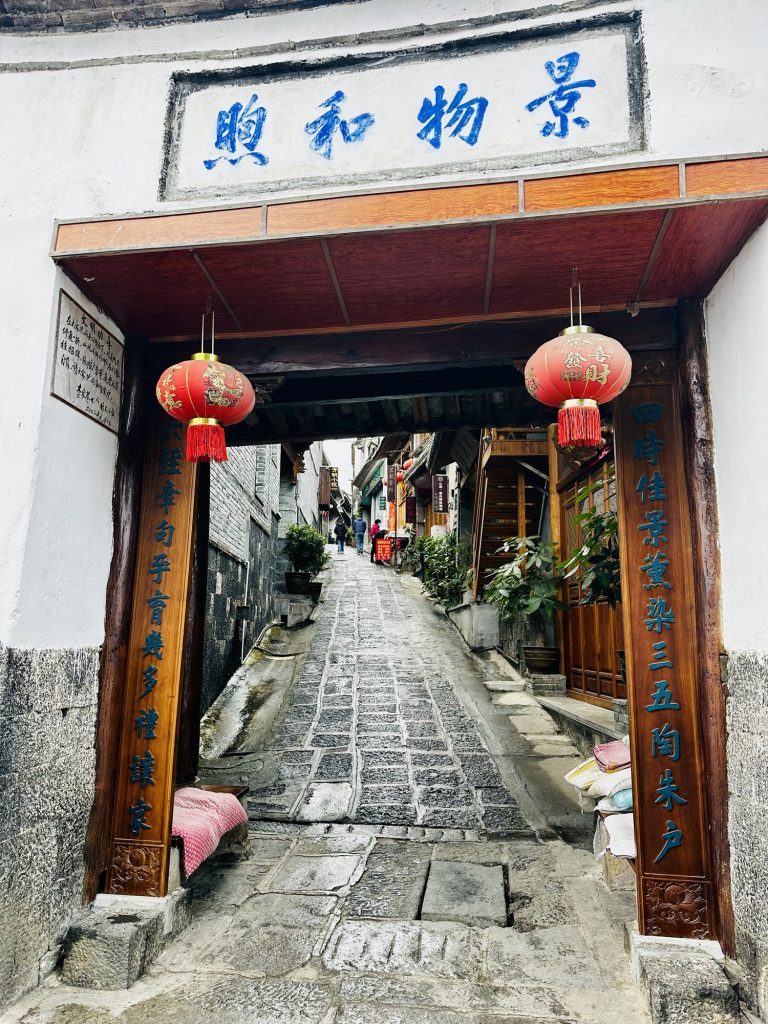
Heshun is not the only place in China that will be experiencing an upturn in tourism during this period known both as the Winter Holiday (hánjià) and Spring Festival (Chūn Jié). Every area of China is cleverly developing a natural resource or a feature of local culture, or preferably both, into an attractive proposition for Chinese wanderlust. The biggest sensation of the New Year so far has been the Harbin Snow-Ice World which has seen more than 3 million visitors venturing into China’s frozen north-east to enjoy ice sculptures and a range of other tourist activities which make imaginative use of this north easterly city’s biggest resource – ice! Shanghai has its famous Yuyuan Gardens Lantern show. This consists of a range of sculpted lanterns showing a range of Chinese and international themes and then a multimedia lantern extravaganza in the evening. In the far south of China in Guangzhou they specialise in vibrant lion and dragon dances. There is also a famous fireworks display scheduled for the first day of the Spring Festival.
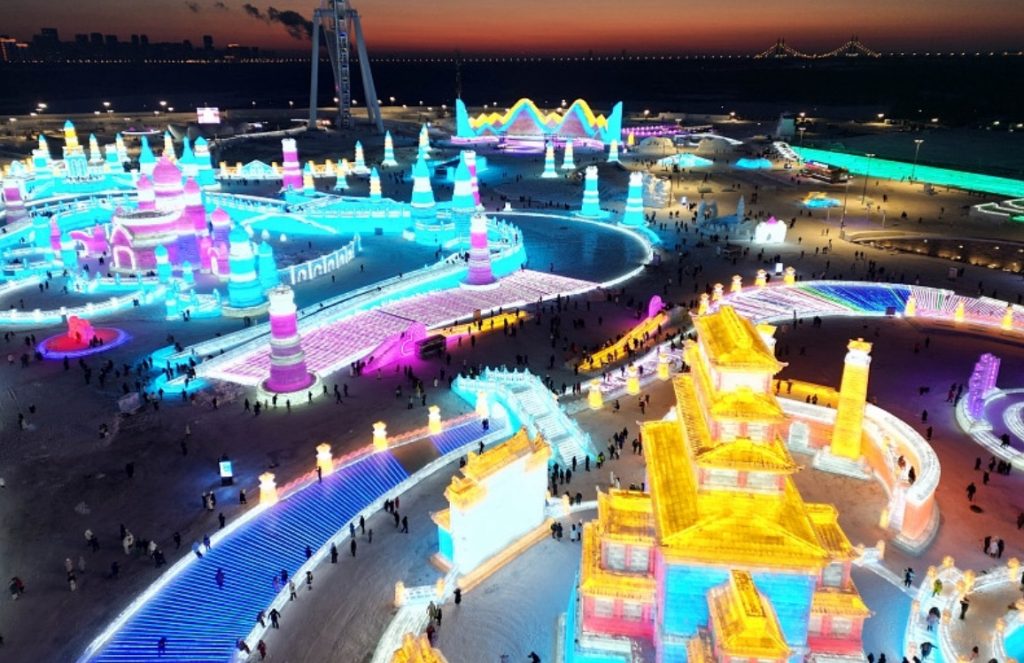
All of this internal domestic tourism is a significant part of the strength of consumer sector economics in China. You see this as you walk around Heshun. Of course the stores are as popular as the gift shops would be in an English tourist centre. But there are also opportunities for growers and producers to tempt travellers with local fruit, vegetables or delicacies, all sold from street corner stalls. In the mountains near Heshun an enterprising group of farmers and villagers have turned a micro climate where the plum trees blossom slightly earlier than other local areas into a thriving business which even boasts its own glass walkway, one of the must-haves of any up and coming tourist attraction in China. An informal farmer’s market has sprung up around the fields of snowy spring blossom. Dai Bin, president of the China Tourism Academy, has predicted that total domestic travel will exceed 6 billion visits in 2024 and domestic tourism revenue is likely to surpass 6 trillion yuan.
To conclude by stepping back a little from these staggering statistics, what I find amongst my Chinese friends is a passion for the cultural aspects of travel that is every bit as strong as that of British people. In Britain this spirit is represented by organisations such as the National Trust, one of whose founders declared in 1895
“The need of quiet, the need of air, the need of exercise, and..the sight of sky and of things growing seem human needs, common to all men” – Miss Octavia Hill ( and ‘all women’ I will add!)
In China increasingly the central government has provided a policy framework of protections for local tangible and intangible culture, for example through the ‘Intangible Cultural Heritage Law of People’s Republic of China’ which was implemented in 2011 and which provided for the protection of traditional etiquette and the celebration of festivals in ancient villages. Amongst both our peoples, there is a shared love of ‘cultural heritage’ which is called in Chinese ‘文化遗产’ or ‘wénhuà yíchǎn’.
As the spring of 2024 opens up a longing for travel and new travel opportunities for people of both countries, let’s hope for deeper curiosity and knowledge of each other’s fascinating ‘ wénhuà yíchǎn’. To end with what I hope is an appropriate Chinese phrase – ‘游兴勃发, yóuxìng bófā, or as we call it in English – ‘wanderlust’.
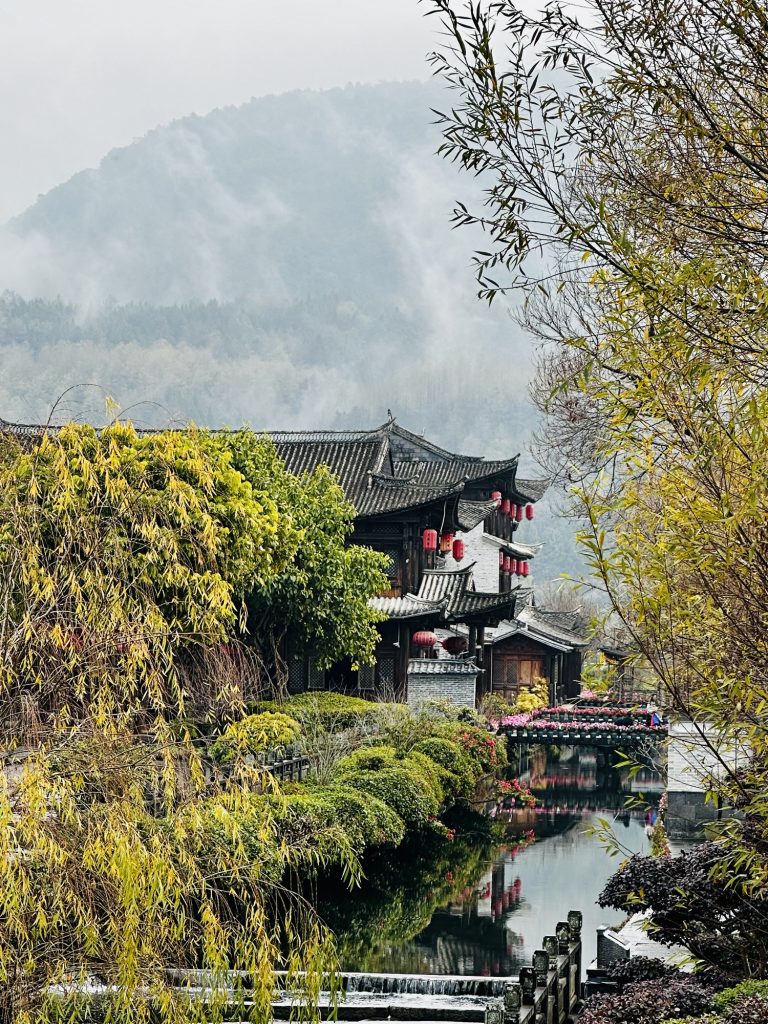
游兴勃发, yóuxìng bófā ~ wanderlust!
(Original photographs by the author)